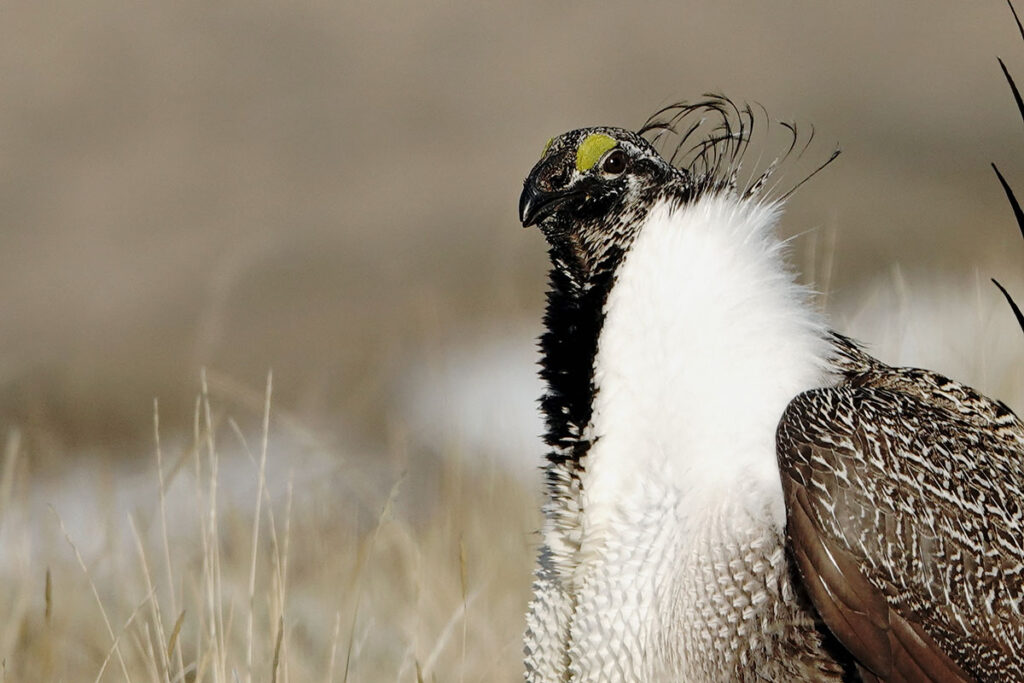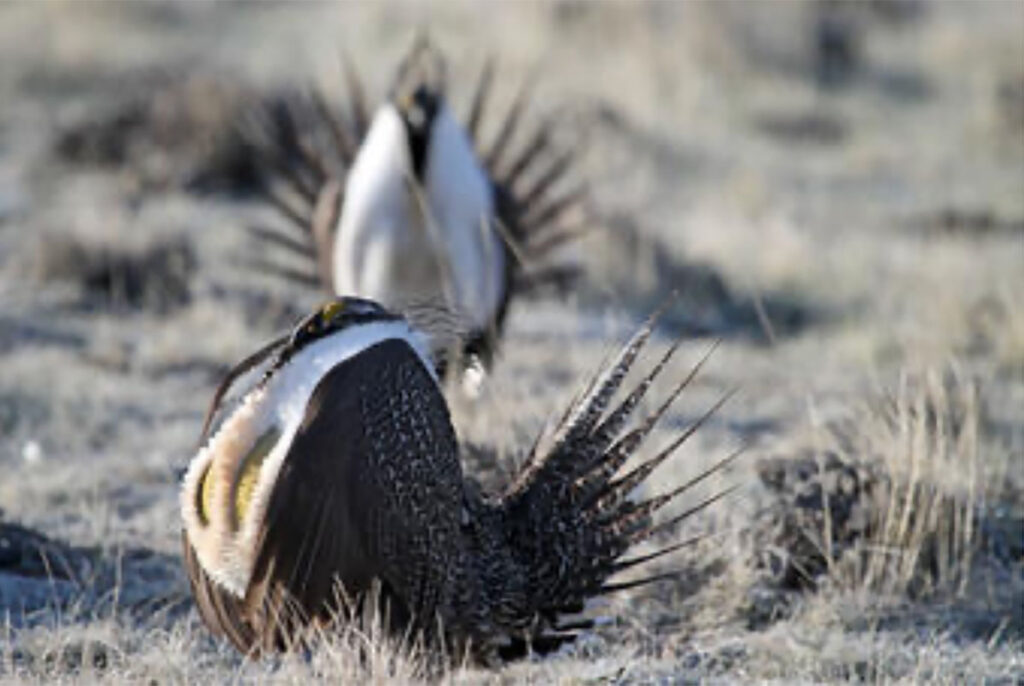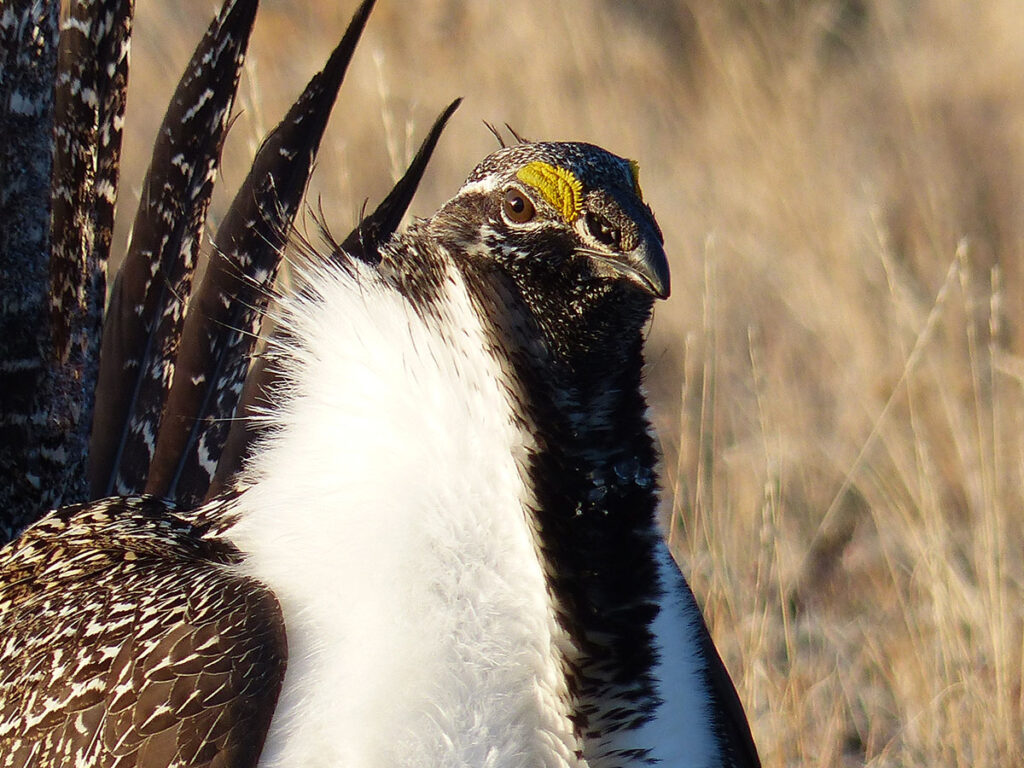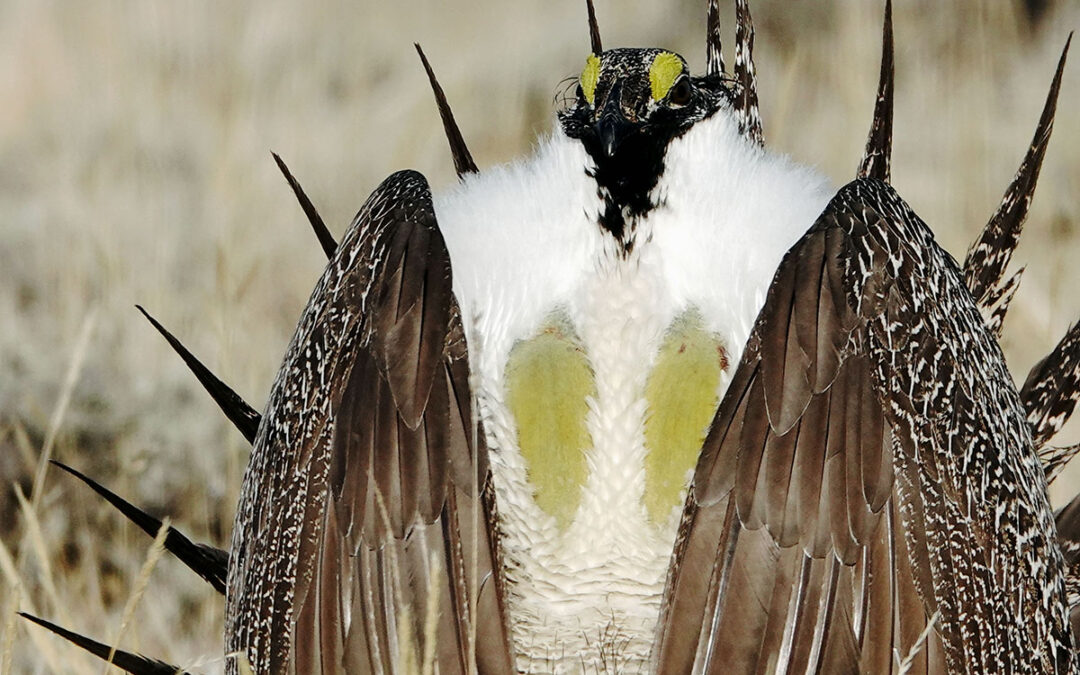Sage Grouse – Photo by Richard Prodgers
Greater sage grouse occupied more than 460,000 square miles across 13 Western states, including Montana, and three Canadian provinces before European settlement in the 1800s. But since that time, sagebrush ecosystems have been destroyed, fragmented, and degraded. Now there are so few pristine and intact sagebrush ecosystems their population has been in a continuous and precipitous decline across their historic range as well as here in Montana, the population has plummeted by 31% — from 70,346 to 48,783 — in just the last three years, which is why the Alliance is going to court to stop this habitat-destroying project.
Proposed project located in prime sage grouse habitat
The project is located in the 367,665 acre Grasshopper Watershed west of Dillon, in southwest Montana. This watershed contains some of the best habitat for sage grouse in Montana, yet the Bureau of Land Management (BLM) wants to funnel existing springs on public land into new water tanks for cattle, which will promote even more widespread grazing and negatively impact this excellent remaining sage grouse habitat.

Sage Grouse Hen – Photo by Richard Prodgers
Founding Resident Equity Program
Livestock grazing and grazing-related infrastructure are some of the most
significant threats to sage grouse and sagebrush habitats. Cattle consume native plants upon which sage grouse rely, they trample and destroy fragile soils, and increase the spread of weeds such as cheetgrass that replace sagebrush and are highly flammable. Cattle also disrupt sage grouse shelter, breeding, nesting, and other phases of the species’ annual life cycles and migration patterns.

Sage Grouse – Photo by Bureau of Land Management
These effects are particularly pronounced around water infrastructure developments for livestock, including spring developments, as they draw livestock to congregate. Additionally, fences erected to manage livestock provide perches for predators and fences kill sage grouse when they fly into them.
Serious flaws in BLM’s analysis
The National Environmental Policy Act requires government agencies to take a “hard look” at any project’s potential and likely impacts to wildlife, including sage grouse and big game. The agency failed to do so, which is a violation of federal law.
Moreover, BLM also failed to disclose sufficient information to the public, which is also a violation of the Administrative Procedures Act. By failing to monitor both sage grouse populations and sage grouse habitat health — including but not limited to the number of active leks where they mate, population trends based on annual lek counts, and acres of available habitat — the agency failed to determine whether more in-depth analysis was necessary as required by the agency’s own sage grouse management plan.
The BLM did not disclose any monitoring data in the Grasshopper Watershed for the population trend data. There are two “triggers” that require further analysis, which the agency did not evaluate nor disclose whether those triggers have been met.
“Hard” and “soft” triggers that require further environmental analysis
The BLM’s 2015 sage grouse management plan contains provisions that require the agency to conduct further analysis. Soft triggers are indicators that management or specific activities may not be achieving the intended results of a conservation action, as demonstrated by population and habitat trends. Meeting a soft trigger requires BLM to enact immediate monitoring and surveillance to determine the cause and may require BLM to curtail certain management activities.
Hard triggers are indicators that management decisions are not achieving desired conservation results, meaning sage grouse are either not responding to conservation measures or are being negatively impacted by certain management decisions. Hard triggers are measured against the number of active leks, acres of available habitat, and population trends. The meeting of a hard trigger necessitates immediate action to stop a severe deviation from conservation objectives.
Because the BLM did not evaluate whether it needed to adjust its management actions due to hard or soft triggers being met, the agency is in violation of the BLM’s 2015 sage grouse management plan as well as the Federal Land Policy Management Act.
Failed to consider increasing climate impacts
The BLM also failed to take a “hard look” at the climate impacts of the project, which is a further violation of the National Environmental Policy Act. The BLM did not analyze how climate change has affected baseline conditions in the Grasshopper Watershed, including sage grouse, sage grouse habitat, and other identified resource issues.

Sage Grouse – Photo by Richard Prodgers
We wish we didn’t have to take the federal government to court to force them to protect rather than destroy sage grouse habitat as required by federal law. But someone has to stand up for sage grouse. And that’s exactly why the Alliance for the Wild Rockies is taking the federal government to court over this ill-conceived and illegal project.
Please consider helping us fight to keep sage grouse from going extinct.
Mike Garrity is the Executive Director of the Alliance for the Wild Rockies.
